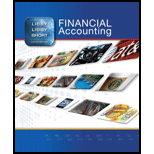
1.
Identify the items that are included as noncurrent assets in the balance sheet.
1.
Explanation of Solution
Non-current assets: It refers to the long-term assets having a useful life of more than a year which is, acquired by a company to be used in its business activities, for generating revenue. Examples of fixed assets are Plant, Property, Equipment, Land, and Buildings.
The non-current assets of Incorporation AE reported in balance sheet are as follows:
- Property, plant and equipment, at cost, net of
accumulated depreciation . - Intangible asset, at cost, net of accumulated amortization.
Goodwill .- Non-current
deferred income taxes. - Other assets.
2.
Ascertain the value of land owned by the company at the end of the most recent reporting year.
2.
Explanation of Solution
Plant, property, and equipment refer to the fixed assets, having a useful life of more than a year that is acquired by a company to be used in its business activities, for generating revenue. Example for property is land, example for plant is building, and example for equipment is machines.
Incorporation AE owns land worth of $6,364,000 at the end of the year. The value of land has been disclosed in the Note 7, “Property and Equipment”.
3.
Compute the percentage of “Unredeemed store value cards and gift certificates” in current liabilities during the current year.
3.
Explanation of Solution
Current liability: Current liability is a debt that the companies need to pay the debts from existing current assets or creation of other current liabilities within a fiscal year or the operating cycle whichever is higher.
Determine the percentage of Un-redeemed store value cards and gift certificates with respect to total current liabilities as given below:
The percentage of Un-redeemed store value cards and gift certificates with respect to total current liabilities amounts to 11.09%.
4.
Explain when the website sales could be recognized as revenue.
4.
Explanation of Solution
Revenue Recognition Principle: Revenue Recognition Principle emphasizes, that the revenue and incurrence of related service must pertain to same period; hence it requires the recognition of revenue, in the same period as the service is provided.
The revenue received in advance, should not be included under the revenues in income statement, as the service is yet to be provided, and the revenue, though received has not been actually earned.
The website sales of Incorporation AE are recorded and recognized “upon the assessed customer receipt date of the merchandise”.
5.
Explain the changes in net income and the
5.
Explanation of Solution
Net income: Net income is the excess amount of revenue which arises after deducting all the expenses of a company. In simple terms, it is the difference between total revenue and total expenses of the company.
Cash flows from operating activities: These refer to the cash received or cash paid in day-to-day operating activities of a company.
Incorporation AE reported
6.
Ascertain the highest stock price for the company during fiscal 2011.
6.
Explanation of Solution
Common stock: These are the ordinary shares that a corporation issues to the investors in order to raise funds. In return, the investors receive a share of profit from the profits earned by the corporation in the form of dividend.
Statement of
The stock price of Incorporation AE in the 1st quarter of fiscal 2011 recorded the highest amounting to $16.18 per share that has been disclosed in Item 5 of the 10-K in the annual report.
7.
Compute the company’s ROA for fiscal 2011 and 2010 and evaluate whether it increased or decreased or remains the same.
7.
Explanation of Solution
Return on assets: Return on assets is the financial ratio which determines the amount of net income earned by the business with the use of total assets owned by it. It indicates the magnitude of the company’s earnings relative to its total assets. The formula is stated below:
Determine the return on asset ratio for the Fiscal year 2011.
Determine the average total assets ratio for the Fiscal year 2011.
Hence, the ROA for fiscal year 2011 of Incorporation AE amounts to 0.079.
Determine the return on asset for the Fiscal year 2013.
Determine the average total assets for the Fiscal year 2013.
Hence, the ROA for fiscal year 2010 of Incorporation AE amounts to 0.070.
The ROA has slightly decreased in the Fiscal year 2011 to 0.079 as compared in the Fiscal year 2011 from 0.070%.
Want to see more full solutions like this?
Chapter 5 Solutions
Financial Accounting, 8th Edition

 AccountingAccountingISBN:9781337272094Author:WARREN, Carl S., Reeve, James M., Duchac, Jonathan E.Publisher:Cengage Learning,
AccountingAccountingISBN:9781337272094Author:WARREN, Carl S., Reeve, James M., Duchac, Jonathan E.Publisher:Cengage Learning, Accounting Information SystemsAccountingISBN:9781337619202Author:Hall, James A.Publisher:Cengage Learning,
Accounting Information SystemsAccountingISBN:9781337619202Author:Hall, James A.Publisher:Cengage Learning, Horngren's Cost Accounting: A Managerial Emphasis...AccountingISBN:9780134475585Author:Srikant M. Datar, Madhav V. RajanPublisher:PEARSON
Horngren's Cost Accounting: A Managerial Emphasis...AccountingISBN:9780134475585Author:Srikant M. Datar, Madhav V. RajanPublisher:PEARSON Intermediate AccountingAccountingISBN:9781259722660Author:J. David Spiceland, Mark W. Nelson, Wayne M ThomasPublisher:McGraw-Hill Education
Intermediate AccountingAccountingISBN:9781259722660Author:J. David Spiceland, Mark W. Nelson, Wayne M ThomasPublisher:McGraw-Hill Education Financial and Managerial AccountingAccountingISBN:9781259726705Author:John J Wild, Ken W. Shaw, Barbara Chiappetta Fundamental Accounting PrinciplesPublisher:McGraw-Hill Education
Financial and Managerial AccountingAccountingISBN:9781259726705Author:John J Wild, Ken W. Shaw, Barbara Chiappetta Fundamental Accounting PrinciplesPublisher:McGraw-Hill Education





